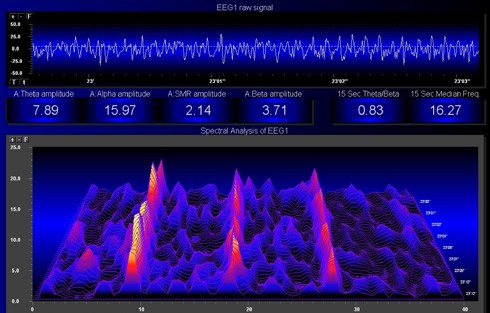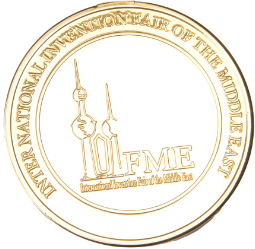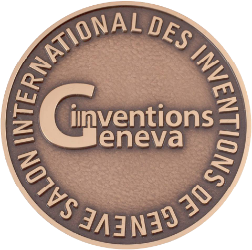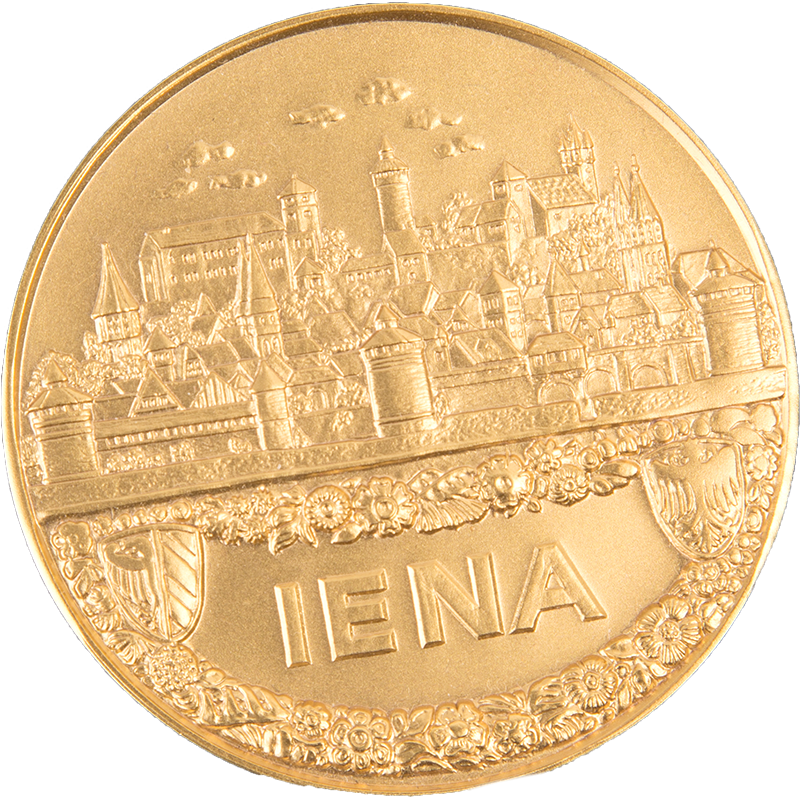Hypnagogic Light Experience
Explore the fascinating phenomenon of Hypnagogic Light Experiences and their connection to the pineal gland, consciousness, and overall well-being. Discover the innovative Lucia N°03 meditation lamp, designed by Dr. Dirk Proeckl and Dr. Engelbert Winkler, to induce deep relaxation and transformative states of consciousness through flickering lights. Experience the potential benefits of hypnagogic light sessions for stress reduction, improved sleep, enhanced mental well-being, and cognitive function.
Definition of Hypnagogic Light Experience
The term "Hypnagogic Light Experience" refers to a phenomenon experienced during the transition from wakefulness to sleep, typically during the early stages of falling asleep. It involves the perception of vivid and often colorful visual images, patterns, or flashes of light. These experiences can vary widely from person to person and may include geometric shapes, scenes, or abstract imagery.
Hypnagogic Light Experiences are considered a form of hypnagogic hallucination, which are sensory experiences that occur during the hypnagogic state, the period of time when a person is drifting from wakefulness to sleep. These hallucinations can occur spontaneously or can be induced through techniques such as meditation, sensory deprivation, or certain breathing exercises.
These experiences are believed to arise from the brain's natural processes as it transitions between different states of consciousness. They are often described as dream-like and can be accompanied by feelings of relaxation, disorientation, or even euphoria.
Hypnagogic light experiences have been of interest to researchers studying consciousness, perception, and the brain's activity during sleep. They are also sometimes explored in the context of artistic expression, meditation practices, and spiritual or mystical experiences.
The Pineal Gland and its Role in Consciousness
The pineal gland is a small, pinecone-shaped endocrine gland located deep within the brain, specifically in the epithalamus, near the center of the brain, between the two hemispheres. Despite its small size, the pineal gland plays a crucial role in various physiological functions and has been associated with several mystical and spiritual beliefs throughout history.
Understanding the Pineal Gland and its Importance in the Light Experience
One of the primary functions of the pineal gland is the production of melatonin, a hormone that regulates the sleep-wake cycle, also known as the circadian rhythm. Melatonin production by the pineal gland is influenced by environmental factors such as light and darkness. When exposed to darkness, the pineal gland increases its production of melatonin, which helps induce sleep. Conversely, exposure to light inhibits melatonin production, promoting wakefulness.
The pineal gland, despite being a relatively small structure in the brain, has garnered attention for its potential involvement in light experiences, particularly those occurring during the transition between wakefulness and sleep. While the exact mechanisms are not fully understood, several theories propose its significance in light experiences:
1. **Melatonin Regulation**: The pineal gland is responsible for producing melatonin, a hormone involved in regulating the sleep-wake cycle. Melatonin production is influenced by exposure to light, with darkness stimulating its release. Light experiences may be influenced by fluctuations in melatonin levels, particularly during the transition from light to dark environments, as melatonin levels rise.
2. **Circadian Rhythm Influence**: The pineal gland's production of melatonin helps synchronize the body's internal clock, known as the circadian rhythm, with external light-dark cycles. Disruptions in this synchronization can affect sleep patterns and may contribute to altered states of consciousness, including light experiences.
3. **Sensitivity to Light**: While the pineal gland is primarily associated with responding to darkness, it contains photoreceptor cells that are sensitive to light. These cells, known as pinealocytes, contain photopigments similar to those found in the retina of the eye. Although their exact function is not fully understood, they may play a role in detecting changes in light levels and transmitting this information to the brain.
4. **Neurotransmitter Modulation**: The pineal gland has been implicated in the synthesis and release of various neurotransmitters, including serotonin and dimethyltryptamine (DMT). These neurotransmitters are involved in mood regulation, consciousness, and altered states of perception. Changes in neurotransmitter activity within the pineal gland may influence the perception of light experiences.
5. **Spiritual and Mystical Interpretations**: Across various spiritual and mystical traditions, the pineal gland has been associated with the "third eye" and regarded as a center of spiritual insight and intuition. While these interpretations are often speculative and not grounded in scientific evidence, they underscore the gland's symbolic significance in experiences related to light, enlightenment, and higher consciousness.
Moreover, the pineal gland has been referred to as the "third eye" in various spiritual and mystical traditions. This association is based on its central location within the brain and its role in regulating light-sensitive processes. Some theories suggest that the pineal gland may be involved in the production or modulation of certain neurotransmitters, such as serotonin and dimethyltryptamine (DMT), which have been linked to altered states of consciousness and mystical experiences.
However, the exact role of the pineal gland in consciousness is still not fully understood, and scientific research on this topic remains ongoing. While the pineal gland undoubtedly plays a crucial role in regulating physiological processes such as sleep, its involvement in regulating melatonin production, circadian rhythms, light sensitivity, neurotransmitter modulation, and its symbolic significance in spiritual traditions suggest its potential importance in shaping perceptions of light and consciousness.
The Pioneers: Dirk Proeckl and Engelbert Winkler
Dr. Dirk Proeckl and Dr. Engelbert Winkler are the inventors of the Lucia N°03 meditation lamp. They developed this device in 2009 and patented it. The lamp is continuously developed and distributed worldwide by the light attendance gmbh, which was founded in March 2011 and is based in Innsbruck, Austria.
Background of Dirk Proeckl and Engelbert Winkler
Dr. Dirk Proeckl is neurologist and psychotherapist who had his own practice in Austria and is now retired. Dr. Engelbert Winkler is a clinical psychologist who had an intense near-death experience at the age of 7. This experience led him to perform extensive research on the phenomenon of near-death experiences.
Together, they developed the concept of "Neuropsycholysis", a new approach in the application of a neurologically induced altered state of consciousness for self-exploration and therapy. Their work with the Lucia N°03 lamp allows users to experience deep, meditative states and explore new facets of their consciousness.
Their Contribution to Hypnagogic Light Experience
Dr. Dirk Proeckl and Dr. Engelbert Winkler have made significant contributions to the Hypnagogic Light Experience through their invention, the Lucia N°03. This device combines flickering light with varying speeds and intensities, and LED (light constant) also generating different degrees of brightness.
The Lucia N°03 is a neuro-stimulator that induces particular forms of brain waves (EEG) normally observed after several years of meditation practice. The strobe triggers certain types of experiences such as intense perception of colors and shapes, loss of sensation of the body, etc., while the constant light is responsible for the actual light experience itself.
Their work allows users to experience deep, meditative states and explore new facets of their consciousness. The Hypnagogic Light Experience facilitated by Lucia N°03 can lead to transcendental experiences that otherwise would come only in extreme situations, such as near-death experiences, entheogenic consumer products (plant-based substance usually ingested to produce altered states of consciousness for religious or spiritual purposes), etc., and therefore generates the same positive side effects.
In summary, their contribution to the Hypnagogic Light Experience lies in the creation of a tool that allows individuals to safely explore altered states of consciousness and potentially experience personal growth and healing.
Deep Relaxation and the Lucia N°03 Light Session
A Lucia N°03 light session is designed to induce a state of deep relaxation. Here's what you can expect from a session:
1. **Visual Journey**: Each session with the Lucia N°03 is a unique journey within. Colors, shapes, and patterns dance behind closed eyelids, creating a kaleidoscope of light.
2. **Deep Relaxation**: Alongside the visual journey, the body begins to let go and deeply relax. The wide-spectrum light of the halogen bulb in the center of the Lucia N°03 is reminiscent of the sun, allowing the body to relax and open.
3. **Neuro-Stimulation**: The Lucia N°03 uses a combination of solid and flashing white light to pull you into a state of deep relaxation. This stimulation temporarily alters the person’s Theta brain waves, lowering them to a level that is achieved after decades of meditation practice.
4. **Personal Growth and Healing**: Visionary journeys, healing memories, and deeper understandings can emerge during the session. The Hypnagogic Light Experience facilitated by a Lucia N°03 light machine can lead to transcendental experiences, generating the same positive side effects.
The Wide Spectrum of Light and its Effects on the Central Brain
The wide spectrum of light refers to the entire range of electromagnetic radiation that is visible to the human eye, extending from shorter wavelengths such as ultraviolet (UV) light to longer wavelengths such as infrared (IR) light. Light, particularly within the visible spectrum, plays a crucial role in regulating various physiological processes, including those in the central brain.
Exploring the Spectrum of Light during a Hypnagogic Session
Here's how different wavelengths of light can affect the central brain:
1. **Blue Light**: Blue light, which has shorter wavelengths, is known to have a particularly significant impact on the central brain. Exposure to blue light, especially during the daytime, can help regulate the circadian rhythm by suppressing the production of melatonin, a hormone that promotes sleep. Blue light exposure during the day can enhance alertness, cognitive function, and mood. However, excessive exposure to blue light, particularly in the evening from electronic devices, can disrupt sleep patterns and negatively affect overall brain function.
2. **Red Light**: Red light, with longer wavelengths, has been studied for its potential therapeutic effects on the central brain. Some research suggests that exposure to red light may help reduce inflammation, alleviate symptoms of depression and anxiety, and improve cognitive function. Red light therapy, also known as photobiomodulation, is being investigated as a potential treatment for various neurological conditions, although more research is needed to fully understand its mechanisms and effectiveness.
3. **Ultraviolet (UV) Light**: While excessive exposure to UV light is known to be harmful and can cause damage to the skin and eyes, there is limited research on its direct effects on the central brain. UV light exposure is typically filtered out by the Earth's atmosphere and is not a significant factor in indoor lighting conditions. However, some studies suggest that UV light may have indirect effects on the central brain through its impact on skin health and vitamin D production, which in turn can affect mood and cognitive function.
4. **Infrared (IR) Light**: Infrared light, with even longer wavelengths, is also being investigated for its potential therapeutic effects on the central brain. Some research suggests that exposure to infrared light may improve cerebral blood flow, enhance cellular metabolism, and protect against neurodegenerative diseases such as Alzheimer's disease and Parkinson's disease. Infrared light therapy is being explored as a non-invasive treatment option for various neurological conditions, although more research is needed to determine its efficacy.
Overall, the wide spectrum of light can have diverse effects on the central brain, ranging from regulating circadian rhythms and mood to potentially influencing cognitive function and neurological health. However, the specific effects of different wavelengths of light on the central brain are still an active area of research, and further studies are needed to fully understand their mechanisms and implications for human health.
How it Impacts the Central Brain Functions
The wide spectrum of light plays a significant role in our brain function and overall health. Some examples include:
Circadian Rhythm: Our bodies are tuned to the cycle of the sun, experiencing sunlight during the day and darkness during the night. This daily rhythm, known as the circadian rhythm, affects all of our major organ systems.
Light Exposure and Memory: Our brains are primed to learn new information during the day when there is a lot of light, and then to store it in long-term memory during the dark night as we sleep. Bright light exposure activates regions of the brain that promote alertness, and improves cognitive performance. Light activates factors that are essential for memory formation, as well as factors that are important for the regulation of mood and overall brain health.
Summary
The Lucia N°03 meditation lamp is a device designed to induce Hypnagogic Light Experiences, which are vivid visual phenomena that occur during the transition between wakefulness and sleep. Invented by Dr. Dirk Proeckl and Dr. Engelbert Winkler, it uses a combination of solid and flickering lights to induce a state of deep relaxation. The light stimulates the brain, altering the person’s Theta brain waves to a level that is typically achieved after decades of meditation practice.These experiences can include colorful patterns, shapes, and images and are often accompanied by a sense of relaxation and altered consciousness. Deep relaxation, facilitated by experiences such as those induced by the Lucia N°03, can have various positive effects on overall health:
1. **Stress Reduction**: Deep relaxation techniques, including Hypnagogic Light Experiences, have been shown to reduce stress levels by activating the body's relaxation response. This can lead to lower levels of cortisol, the stress hormone, and a decrease in overall stress-related symptoms.
2. **Improved Sleep Quality**: Hypnagogic Light Experiences can promote relaxation and help regulate the sleep-wake cycle, leading to improved sleep quality. Adequate sleep is essential for overall health, including cognitive function, mood regulation, and immune system function.
3. **Enhanced Mental Well-being**: Deep relaxation techniques have been associated with improved mental well-being, including reduced anxiety and depression symptoms. Hypnagogic Light Experiences may provide a unique form of relaxation that promotes a sense of inner peace and emotional balance.
4. **Cognitive Benefits**: Some studies suggest that Hypnagogic Light Experiences may enhance cognitive function, creativity, and problem-solving abilities. By promoting relaxation and reducing mental clutter, these experiences may improve cognitive performance and mental clarity.
5. **Physical Health Benefits**: Deep relaxation can have positive effects on various aspects of physical health, including cardiovascular health, immune function, and pain management. By reducing stress and promoting relaxation, Hypnagogic Light Experiences may contribute to overall physical well-being.
Overall, the tie between the Lucia N°03 meditation lamp, deep relaxation, Hypnagogic Light Experiences, and overall health lies in their ability to promote relaxation, reduce stress, improve sleep quality, enhance mental well-being, and potentially benefit various aspects of physical health.
Below is a picture of harmony visible in the EEG (brain scan) after only a few minutes into a Lucia N°03 light experience.







